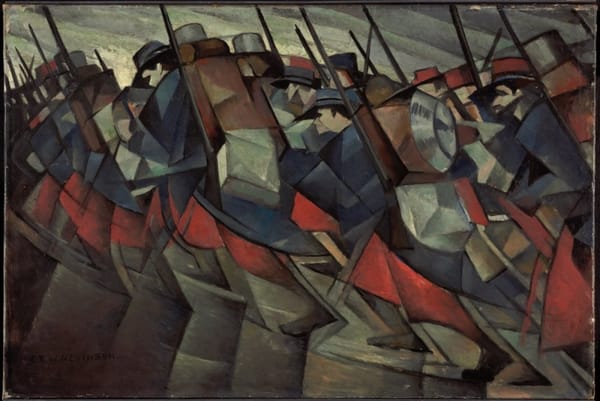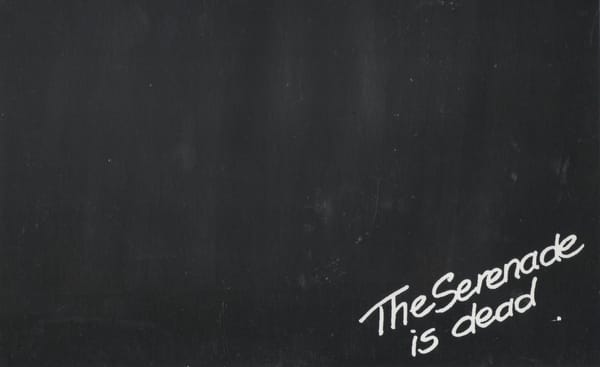A Fork In It
The End of ♆ and the Decadence of E*g Punk

There aren’t many venues for serious music criticism left out there—or for any substantial writing about art at all. Most online coverage simply duplicates a label’s copy across platforms, or sorts a week’s releases into playlists, restating the endless shuffle of user-profiling, pay-to-play distribution services like Spotify or Apple Music. Name recognition is all, affirming senseless repetition; recommendation chases reputation in circles; and even independent platforms dutifully clear space for Fallon-pilled candy floss as if it had a mandate.
With so few spaces to spare, it’s authentically bad news that Condé Nast, the multi-billion dollar media empire, has decided to merge its Pitchfork platform with men’s interest rag GQ; drastically downsizing Pitchfork’s operations and precipitating mass layoffs, including countless of the senior staffers who have transformed the publication over the last two decades. Condé Nast initially acquired the website in 2015, pledging a hands-off approach to its content. At the time, Pitchfork was optimistic: “Condé Nast believes, as we do, that Pitchfork has built an editorial voice that stands strongly alongside its others, and that the integrity of that voice—and our opinions—are fundamental to our identity,” they wrote in an announcement. “We’re incredibly fortunate to have found in Condé Nast a group of people who share every aspect of our focus.” Flash forward eight years, and the platform’s best writers are being ushered out the door by no lesser villain than Miranda Priestly herself.
For years, I had a healthy contempt for Pitchfork, as befits a self-respecting punk. I saw it as attempting to consolidate a professional-managerial canon for a generation lost in transition, and I identified its mission strongly with the advance of artists like Arcade Fire and Sufjan Stevens—aural furniture for people who can’t feel the urgency of life without piped-in, extradiegetic cues. It’s still shocking to read some of the most infamous early reviews, to say nothing of founder Ryan Schreiber’s insane penchant for writing in dialect, including desperate hepcat slang—a masterclass in how not to behave around other people’s art, or anywhere.
Over time, however, Pitchfork writers proved my dim assessment wrong. Did music get better at the end of a grim interregnum? Or did something change behind the scenes, facilitating an influx of fresh, intelligent voices? No doubt a combination of both, but you can’t mistake the depth, breadth, and commitment of Pitchfork’s output in the almost twenty years since I harrumphed instead of reading on. “It took a while for Pitchfork to catch up to the writers and editors who were several steps ahead in alt media, those who realized how much work needed to be done to make the music press aware of its biases and prejudices,” editors confessed on the website’s twenty-fifth anniversary. But by the time of this 2021 summary, the site had already shed its reputation as a Radiohead street team, and was publishing important, inquisitive writing by diverse contributors about a wide range of musical cultures.
Having noted this wealth of good writing, why use a sad occasion to reiterate my early distaste for the platform? Simply put, because I fear that this earlier iteration, and not the later variety of voice and perspective, is precisely what Condé Nast always intended to acquire, and will be integrating into its GQ flagship hence. In this week’s coverage of the merger, a 2015 quote from Condé Nast’s former chief digital officer Fred Santarpia is making rounds once more, in which he boasts of how the Pitchfork acquisition brings “a very passionate audience of millennial males into our roster.” As evidence goes, that’s a fairly direct show of contempt for everything the platform has become, and for most of its readers and writers.
The soundbite caused a stir at the time, as Schreiber attempted damage control and many smarter staffers pushed back; but the prophecy was uttered. Pitchfork’s actual value contribution to the Condé Nast nest matters far less than the publisher’s ambitions for the brand, and it’s no surprise that this reductive appraisal of its readership is in front of everybody’s mind while some of the most influential and perceptive music writers of the last decade are sent packing.
Pitchfork wasn’t perfect—it was far too ambitious a platform to be consistent, especially where its bread and butter is the stuff of subjectivity itself. Even at its best, I thought that it set aside far too much space for the most ubiquitous pop music in the world without offering much by way of reappraisal; no doubt vying for the position of a Rolling Stone. Perhaps there’s a lesson here too; that even large concessions to high-grossing dross will not protect you from the Wintour auditors. Any future stability depends upon divestment from their ilk.
Clearly, its time to organize, whatever the workplace; and to hatch new, completely independent projects for the keeping of under-regarded art. Pitchfork was never the future; but I’m still alarmed at the prospect of its disappearance, and angry on behalf of the excellent reviewers and editors sacked in the wake of a truly careless decision—one that heralds worse for working writers in the years to come, and threatens artists with drought in a growing desert of reception.
Choose Your Player // Pick Your King
What's that?
An egg?
By the brother Boot it stinks fresh.
- Samuel Beckett
As readers know, I’m into everything; life’s short and ridiculous. Even so, I have to raise an eyebrow at Spin magazine’s announcement of the “second wave of egg punk”—an extremely online catchall for variously effete (“artsy”) garage punk of the last decade, originating as a joke and then persisting as a term of loose identification. Since its origins as a meme, Ben Salmon says, egg punk has become “a legitimate worldwide scene that feeds record labels’ release schedules, fills slots at music festivals, and finds its way to cool grandmas.” I was barely alive at the heyday of grunge, but I can imagine that this is what it felt like to watch Mark Arm’s affectionate jibe spread; though such viral events happen with greater frequency and smaller impact today, lacking corporate backing.
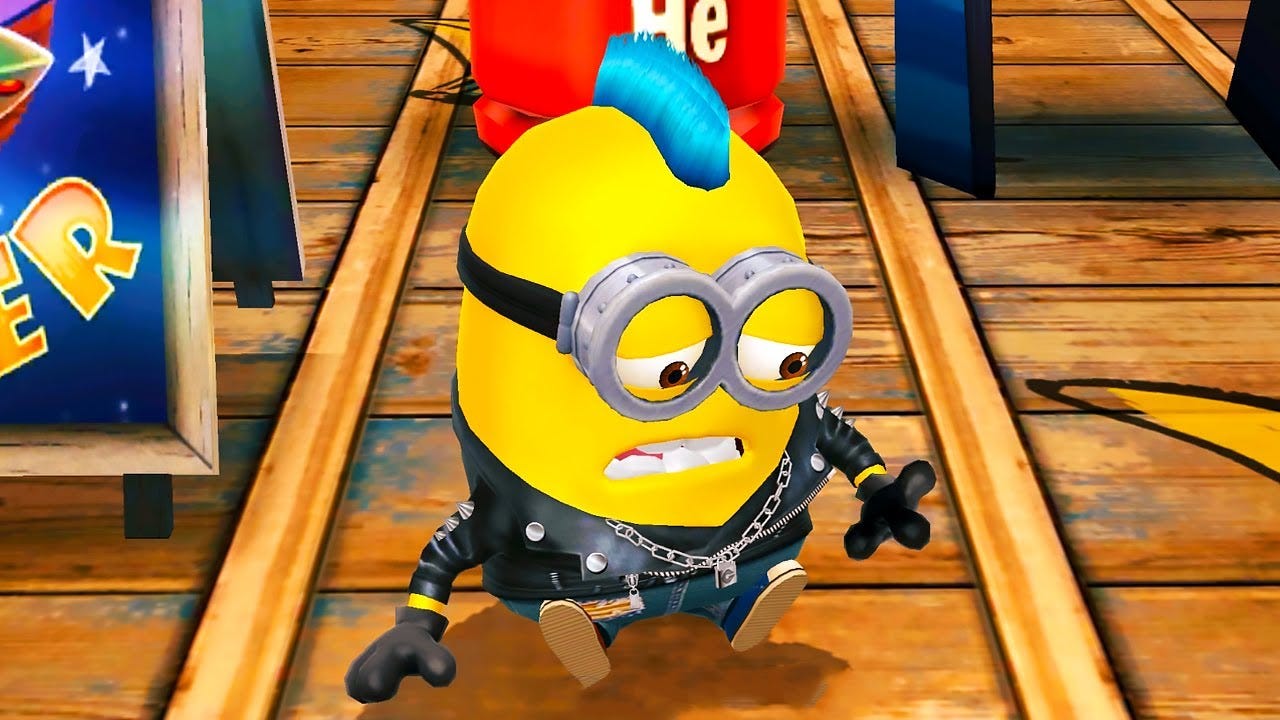
It’s all good, in a sense. Genre names are silly, and only familiarity commends them to taste. Punk was a near-slur in the seventies; hip hop is rumoured to have originated from an onomatopoeic taunt at a party. Taxonomically speaking, these are relatively stable genera, at least today—but punk was a lowly adjective at first, qualifying rock and roll under the auspices of a return to form. Then hardcore arrived, modifying punk; and now the suffix ‘core’ sticks to anything, as a kind of exponentiation. I’m fascinated by these locally contingent, often freely associative and re-appropriative, processes of coinage and transmission; or, in more effortful cases, the nonsense poetry by which new, breakaway denominations are proposed, many failing to take.
Of these attributable terms, I think of Robert Christgau’s “skronk,” which continues to pay its way descriptively; or Eric Davidson’s account of the “gunk punk undergut,” an attempt upon the brainy ribaldry of nineties garage rock. (I’ve never heard anyone else use this combination of words, but it’s morphologically persuasive.) Nearer home, I don’t even bother trying to explain to strangers that I moonlight in a “mincecore” band because the term is so unhelpful outside of a rigorously speciated scene. Within those bounds, however, it’s the premise of many a global compilation.
Where my own preferences are concerned, I tend ecumenical. To me, all DIY punk music since about 1980 has been part and parcel to that attitude adjustment called hardcore. This isn’t just an escalation trend, but an ethical stance; re: which I’ll cop to some crude historical stagism. If, after hardcore, it isn’t hardcore, then it isn’t punk, either. Post-punk, to be clear, remains a capacious and appealing option, denoting almost everything; but after a point, it’s hard to found new forms of punk rock attributively, because, frankly, it’s all a touch anachronistic.
This is to say, my lexical quarrel with “egg punk” isn’t because of any supposed purism; and it isn’t because of an antipathy toward the bands. I love DEVO and can’t imagine who doesn’t. Most of this music is good clean fun, and Spin shouts out legitimately great shit, from Midwestern mainstay Erik Nervous to Australia’s Checkpoint, whose debut LP is a prodigious outpost of a global style—fast-paced synth punk with danceable breakdowns. There’s a new Uranium Club record on the horizon; glad tidings all around.
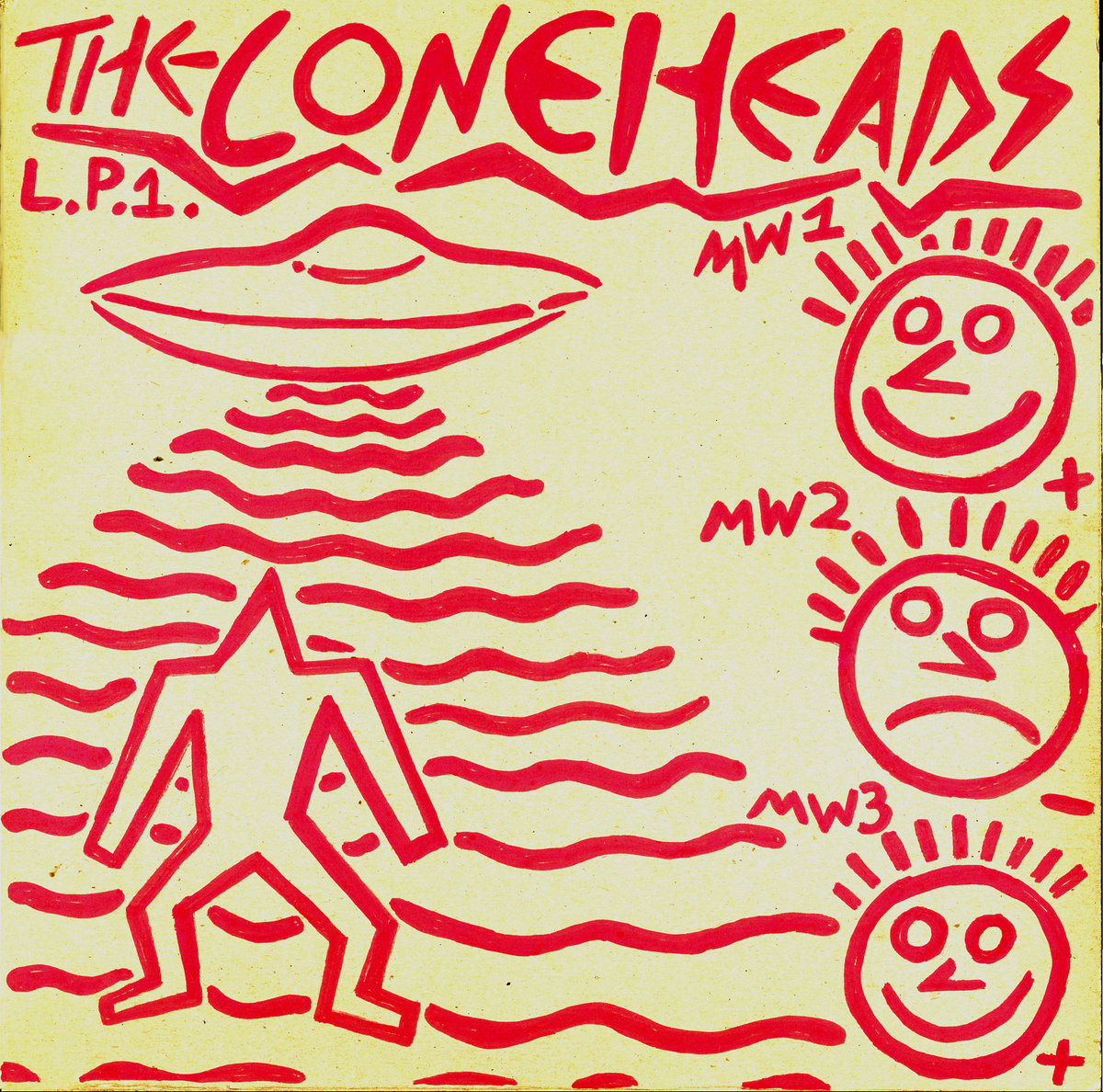
As everybody likely knows, egg punk is one half of a mostly visual dichotomy, originating from a series of memes that proliferated around 2017 or so. The meme supposes two main emphases of modern punk, “egg” and “chain,” and attempts to map recent trends and eccentricities in tight-knit scenes onto a resulting spectrum. The format exploded on Instagram, and an inscrutable joke somehow reared to life, retroactively recruiting canon—Coneheads here, Omegas there, and so on; both cool IMO. But it’s not important to determine allegiance or affinity at this point, where the sorting power of the rubric implicates every animal, vegetable, and mineral.
Sunscreen is egg punk; so is, I don’t care, Donald Barthelme. The beach, let’s say, is chain punk; and, why not, the work of Jules Feiffer. Or maybe the reverse. At its best, the meme works through the interpenetrating proximity of its tropes. A bus pass is egg punk; bus tickets are chain punk. Men are from Mars and women are from Venus. Here as ever, the binary drive greets a world in which “each thing seen is the parody of another, or is the same thing in a deceptive form.” So, as an exercise in pet ontology or harmless party game, who cares? As the Spongebobification of all culture proceeds, why not stop worrying and love what the moment avails?
At first and worst, however, the gimmick invited a slew of showy coterie posting. For people who listen to more than twelve bands on four labels, the comparison ought to have had small relevance. Why force your local activity to conform to a pre-fabricated, viral framework? If anything, the US-centric meme affirms a geographical cleave in style older than hardcore; where the Midwest colleges tend to mad science as their metropolitan peers cultivate a scarcely believable seediness.
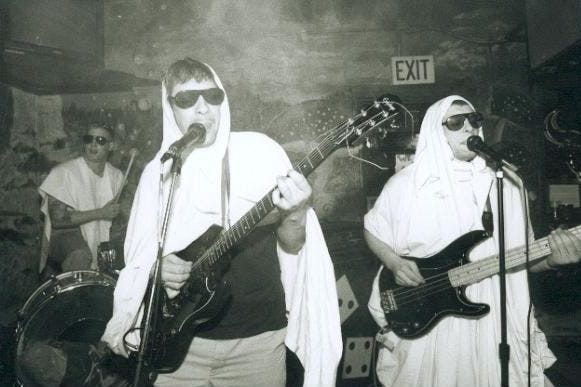
Otherwise, a lot of my favourite punk music hovers in an ambivalent space that this fad can’t account for— whither Wrangler Brutes or the Spits? The sordid legend of Cleveland punk belies any such distinction, where genuinely terrifying, pure hardcore commingles a plethora of junk-shop ufologist rock. If the contrived outsider stance of “egg punk” counters the preening machismo of in-group hardcore, I’m at least sympathetic; but to me, the whole thing smacks of schoolyard cooties.
As punk no longer sustains any meaningful antagonism of mass culture, it’s weird to see the historical enmity of hardcore and new wave put forth as a relevant distinction. And while the moment of this inside joke has mostly passed, something in the “second coming” really baffles me—how could anybody’s band style itself after a series of Instagram posts? Are there no goddamned lineages anymore? The whole thing feels like another instance of punk activity becoming algorithmically subsumed, abducted from context and cycled back to us suggestively; of viral marketing at an ironic distance from the premise of an all-encompassing consumerism.
On one hand, the explanatory power of the egg-chain heuristic has everything to do with the homogeneity of punk in the post-DIY, streaming era; where limitless access seems to oblige everybody to the same accelerating trends, rather than conveying resilient localisms to a larger reception. On the other hand, as a meme, it simply follows the surrealist insight that anything can be put forth as the principle of anything else. In this sense it’s hard to care too much about an expired gag, already insusceptible to earnestness by design.
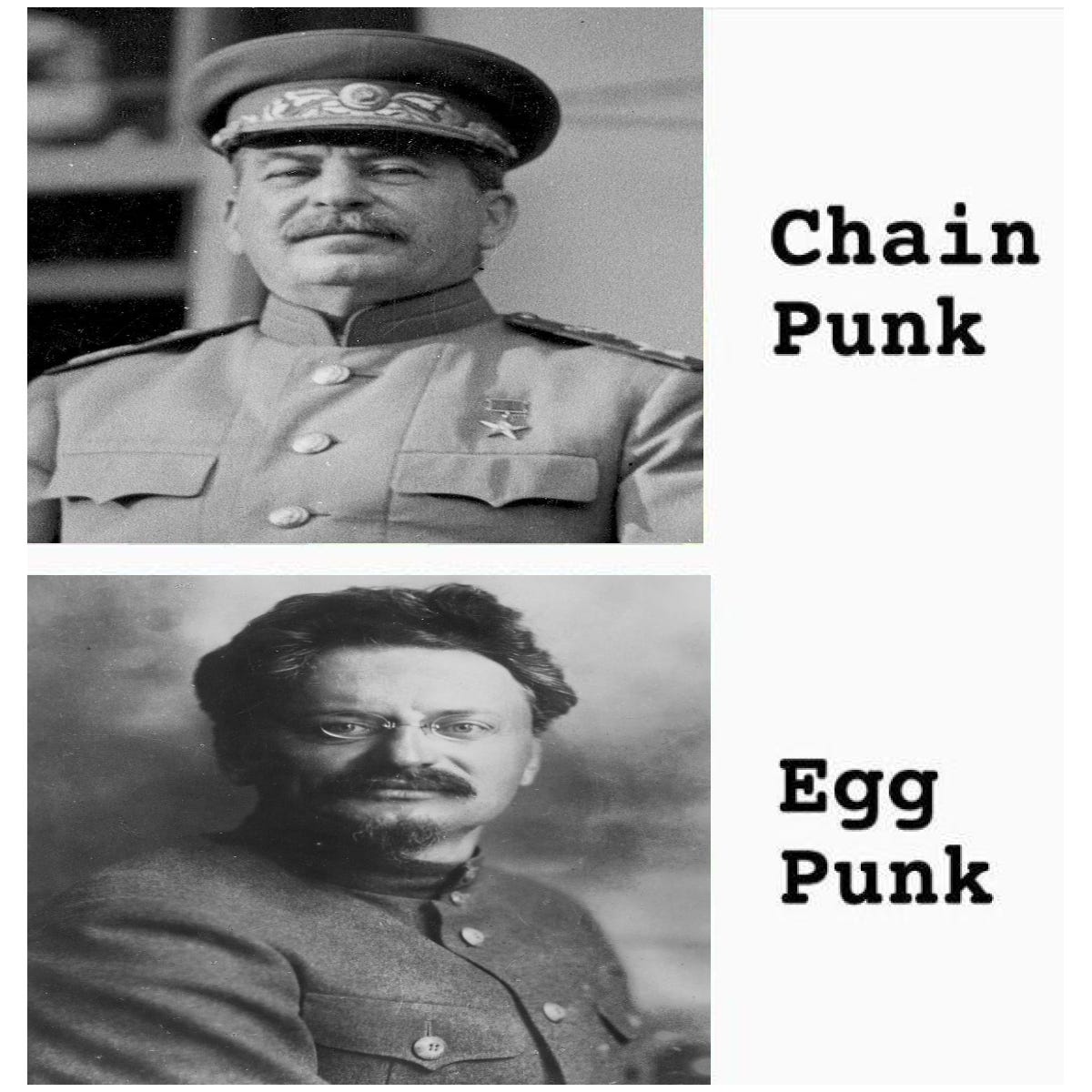
A reasonable test of new language is whether or not anybody identifies with it at all; and the great “egg” bands of past and present seem reluctant to adopt the mantle. There’s a familiar and foreseeable dynamic afoot here, where music writers and big labels lead with a glib catchall that’s actively disavowed by the bands it describes, as a gulf opens up between practical activity and its secondhand depiction. Sometimes this reluctance before genre is falsely demure, and a sign of upward mobility—as soon as a favourite punk or hardcore band starts to explain how they just play rock and roll, unmarked by any term of subculture, you know that they’re about to release some of the worst music ever made. More often, however, this refusal means that a terminology has outlived its usefulness or missed its mark; and there’s just no reason to persist in saying it outside of indie swindle.
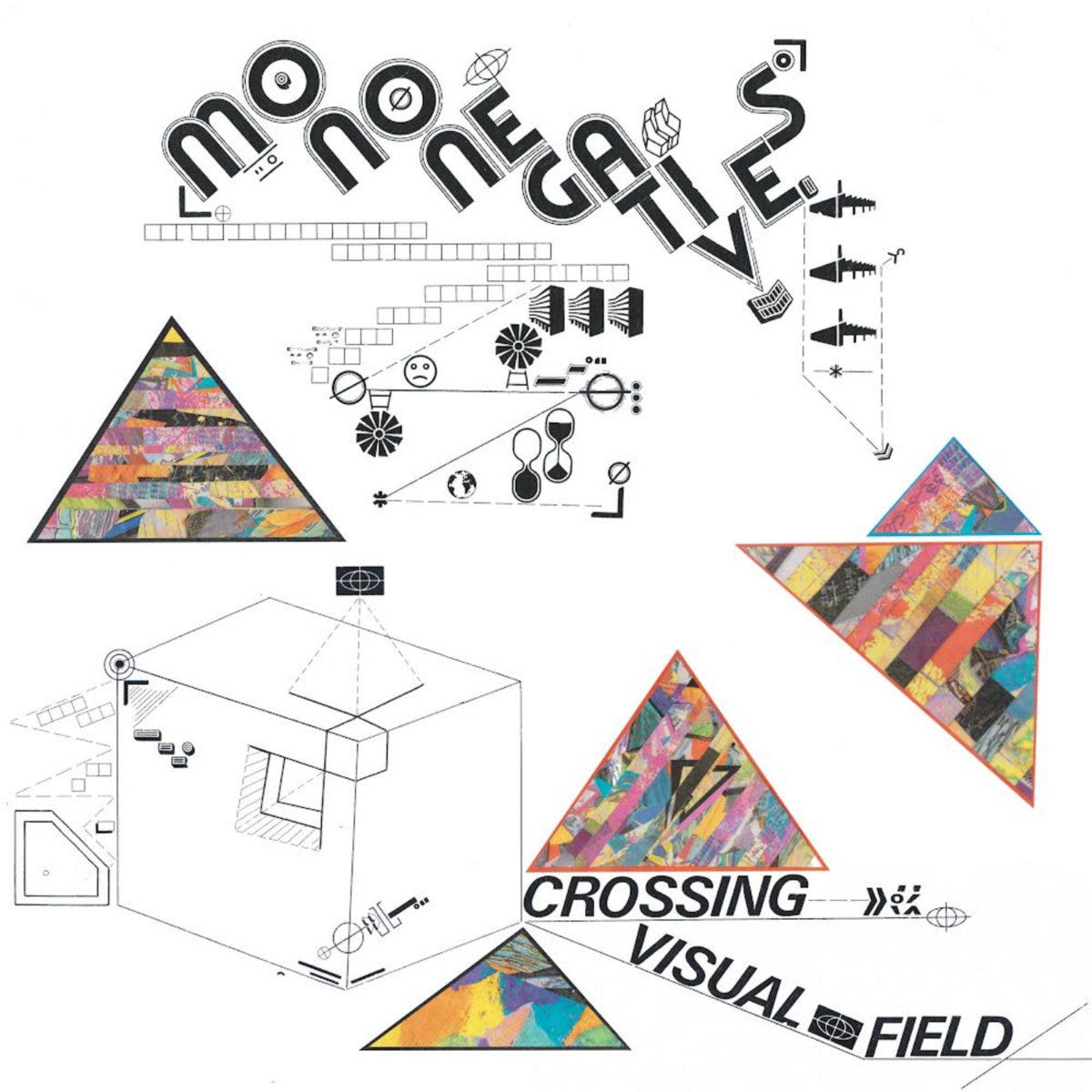
On the most recent episode of Radio State, I played a solid block of synth-heavy, hard-driving punk rock and roll, call it what you will; including MONONEGATIVES, Ismatic Guru, Fashion Bathers, and more. Doff the hype and take me away!


